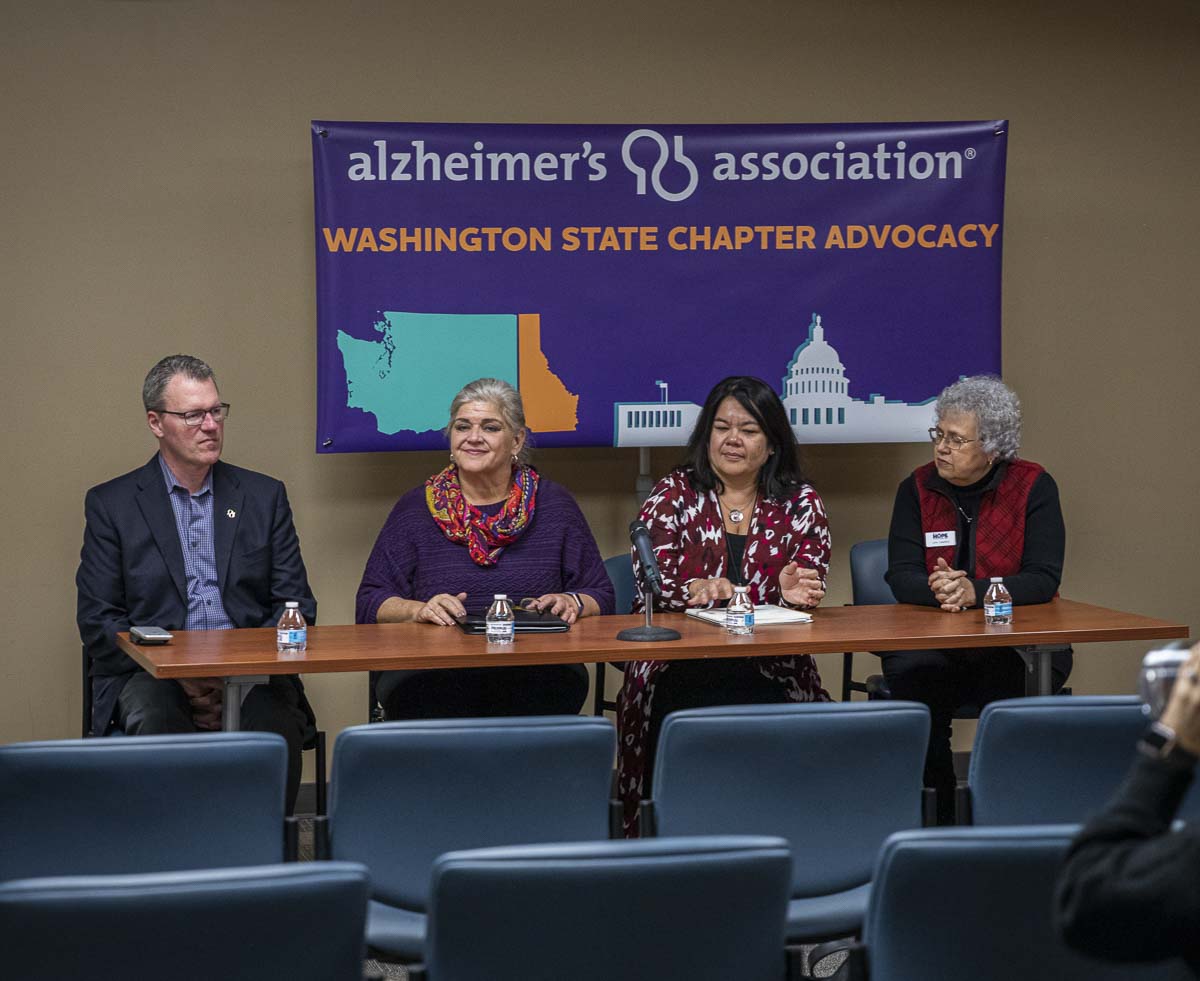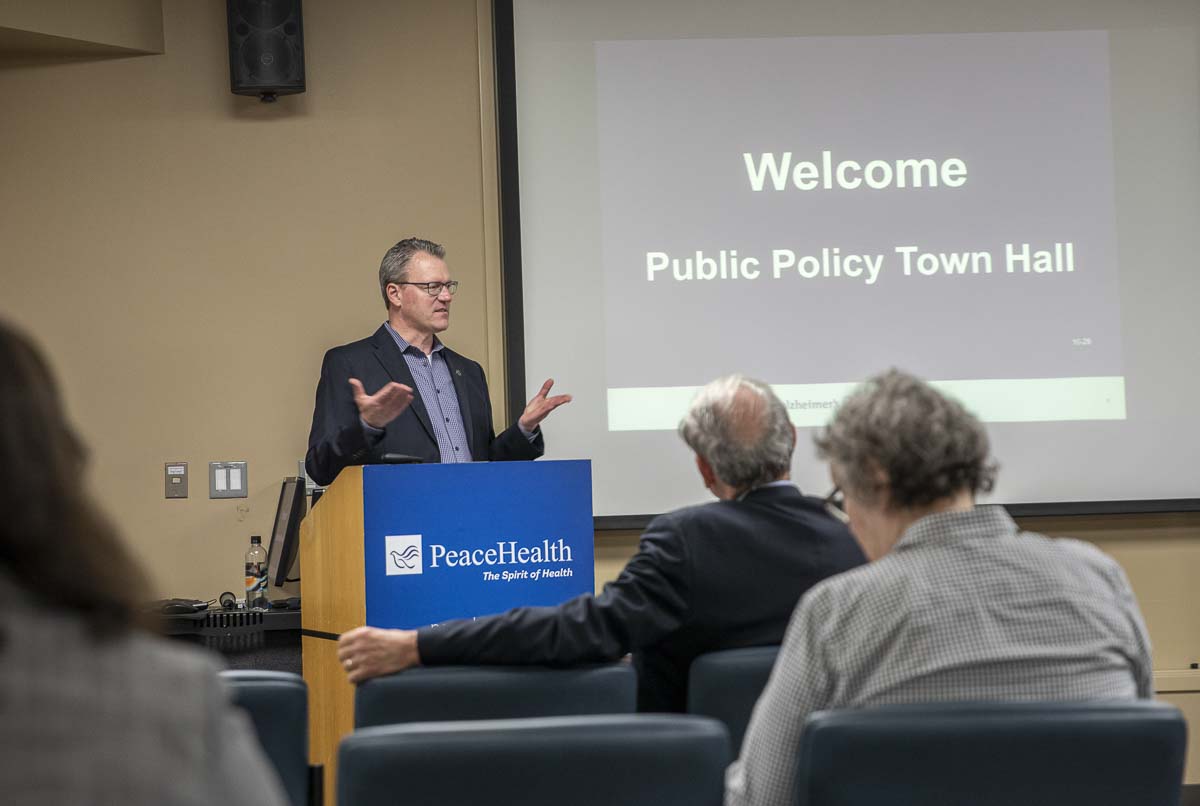New data and new funding to find a cure to Alzheimer’s
VANCOUVER — Alzheimer’s is the most expensive disease in the United States, costing $290 billion this year alone, according to the Alzheimer’s Association. Well over 3,500 deaths from the disease were seen in Washington in 2017.

By the year 2050, it is projected that the disease, if still incurable, will cost America an estimated $1.1 trillion; an amount the country will likely not be able to afford.
Some say it’s time to change things; it’s time to be serious about a cure.
“For the last two years, we’ve had one person at every one of our walks in the 650 locations around the country, carry a white flower,” said Regional Leader for Alzheimer’s Association Jim Wilgus, describing the Walk to End Alzheimer’s. “Oftentimes it’s a child, and that signifies the first survivor of Alzheimer’s disease. And until we have that first survivor, we will continue to have a white flower and I hope that someday a survivor might be a child of mine, a grandchild, or even a great grandchild.”
The Alzheimer’s Association is now hosting public meetings in the Portland Metro area, with one being held at PeaceHealth Southwest’s Education Center on Nov. 13.

These gatherings are designed to help give better information about Alzheimer’s and dementia to the public, as well as inform them about ways to get behind the cause and affect change fiscally and communally.
Comparatively to other research and medicine funded by the Federal Government, Alzheimer’s was and is, receiving substantially less, according to the association. Over the course of the last three decades, organizations like the American Heart Association through the NIH as well as cancer and HIV/AIDS research have received robust funding packages.
In 2010, cancer research was at $6 billion, heart disease at $3 billion and HIV/AIDS was at $2 billion while Alzheimer’s received only $450 million, Wilgus said. Due to the lower level of funding, the association and its partners began attaching advocates to members of Congress and submitted requests for a budget of $2 billion, citing scientists and researchers estimates.
Wilgus explained an analogous situation he helped spearhead while working at the American Heart Association in the early 2000s.
“The American Heart Association adopted a pursuit to reduce death rates for cardiovascular disease by 25 percent by 2010, and our pursuit at the time was getting much more funding into the NIH research budget,” Wilgus said. “And not only was the death rate by cardiovascular disease was reduced by 25 percent by 2010, it actually occurred in 2008. So if we follow the same kind of pathway as heart disease, as cancer, as HIV/AIDS, we’ll reach that goal of having that treatment therapy or cure by 2025.”
The other large component of the presentation centered around the difficulties faced by caregivers and Alzheimer’s patients because of changes to Medicare/Medicaid, treatment options, lack of warning signs, and stress.

According to the association, over 95 percent of people with Alzheimer’s also have one or more chronic conditions. The Alzheimer’s makes managing these conditions much more difficult and results in higher costs for care. These increases in turn, drive up the costs of Medicare.
In Washington state, when it comes to Medicaid, some $517 million was spent on Medicaid for those diagnosed with Alzheimer’s in just 2019, according to the association and the Alzheimer’s Impact Movement (AIM). There is also expected to be nearly a 32 percent increase in this spending by 2025.
“Medicare came up with a code that physicians can apply for reimbursement to give individuals who are diagnosed with dementia or Alzheimer’s disease care planning,” Wilgus explained. “The problem is too few physicians and medical professionals know about it. So we’re going back to Congress to use the promotion arm of Medicare to actually inform the medical community about this code.”
When it comes to treatment and warning signs, Alzheimer’s is often not caught as soon as it could be. Later in the meeting, several health professionals and community members commented on the lack of screening taking place with many primary care physicians and their patients over 65.
Cognitive function evaluation is not currently SOP for many medical offices when taking vitals from a patient during a check-up visit. Many at the event questioned why this was, and the consensus was there was not a credible reason.
Another attendee commented on the lack of gerontologists in today’s medical world. She speculated that with declining interest in the field, many medical students were receiving very little training and study on the subject.
Many of these issues outlined above, are the association’s justification for pushing for greater funding and support of a treatment and a cure for Alzheimer’s. They often site the astounding figures for the cost of care given by loved ones and friends of patients.
In Washington alone, the total estimated value of unpaid care given to Alzheimer’s patients in 2018 is over $5 billion. This is a state where in 2018, there were nearly 350,000 caregivers. These numbers are reflective of the efforts being made by people who currently do not have much if any financial support from governments.
“I found hope after my husband died,” said Christina Marneris, the community services program supervisor for the Area Agency on Aging and Disabilities of Southwest Washington (AAADSW ). “What I discovered is that there wasn’t a lot of support out there. He spent his last six months in a facility and they had monthly monthly support groups and I was able to attend twice in his six months, because life happens. So when I discovered the HOPE support groups, which meet weekly it resonated with me.”
The goal of the association and meetings like that of Nov. 13, is to explain why the efforts for more funding and awareness is happening now. They also said they hope to inform residents of how they can become involved in the cause and find support.
Right now, the Alzheimer’s Association, AIM and the AAADSW are working to have “your voice transmitted to members of Congress on initiatives the Alzheimer’s Association is pursuing,” Wilgus said.
Through the association’s website you can donate $20 to become a “super advocate” as well as sending a letter to your local state and national representatives. You can also find information and events on Facebook.




